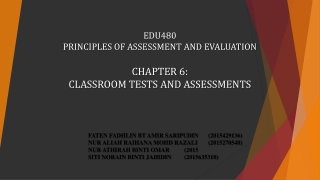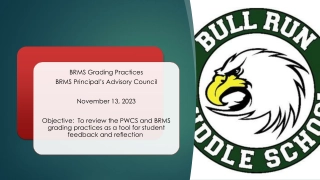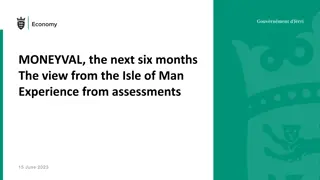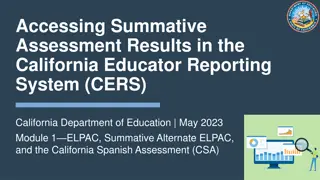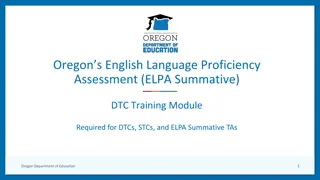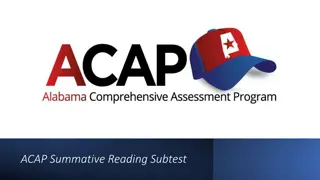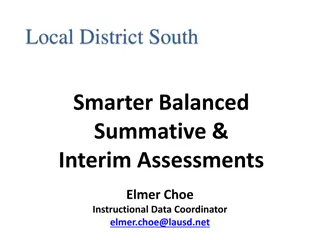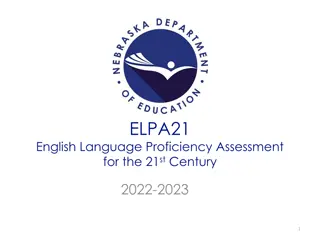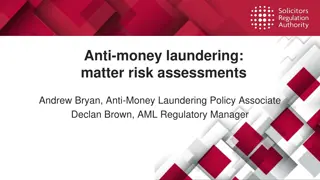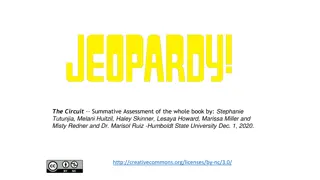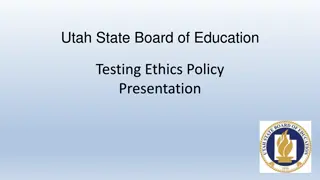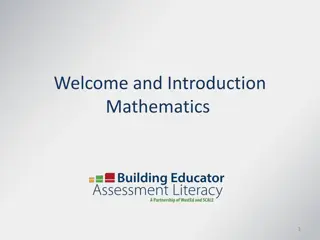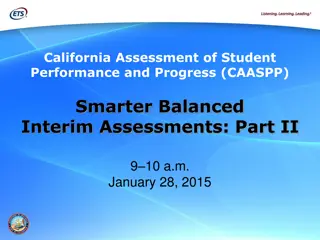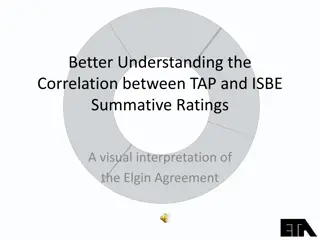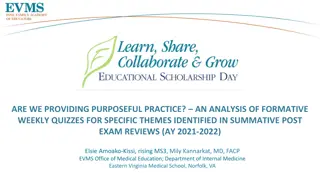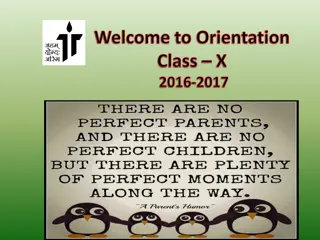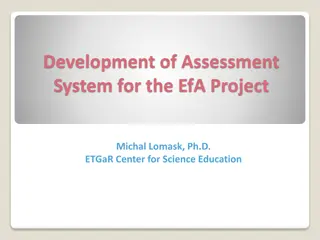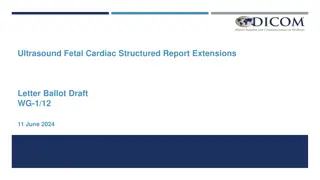
Effective Strategies for Student Assessment and Evaluation
Exploring various assessment methods such as formative and summative assessments to evaluate student learning progress comprehensively. Emphasizing creative and engaging approaches to enhance educational outcomes.
Download Presentation

Please find below an Image/Link to download the presentation.
The content on the website is provided AS IS for your information and personal use only. It may not be sold, licensed, or shared on other websites without obtaining consent from the author. If you encounter any issues during the download, it is possible that the publisher has removed the file from their server.
You are allowed to download the files provided on this website for personal or commercial use, subject to the condition that they are used lawfully. All files are the property of their respective owners.
The content on the website is provided AS IS for your information and personal use only. It may not be sold, licensed, or shared on other websites without obtaining consent from the author.
E N D
Presentation Transcript
An assessment in which the goal is to evaluate student learning at the end of an instructional unit Compares student learning against some standard or benchmark Traditional trends in testing are often high stakes and high pressure (grades, statistics, GPA) Aims to reveal attainment of knowledge by seeing if the students understand the big picture
Formative assessments are used to check students progress, and help teachers and students identify gaps in knowledge that may require additional learning opportunities for success. Even though they re different from Summative assessments, the two different types cooperate and facilitate success by making progress checks [Formative] and acting as an end survey of retainment [Summative]!
Oral Projects (debate, interview, newscast, video) Products (brochure, poster, newspaper, timeline) Multimedia (ppt, website) Research and Writing ( Essay, research report, letter, analysis) Performance or portfolio Traditional multi-format test (multiple choice, short answer, matching, essay)
It depends on your content! Get creative. Assessment starts before teaching begins. SYLLABUS o Stick to your rubrics for assignments Get to know your students Design formative assessments that act as building blocks Allow students to exhibit their mastery of material in creative ways Encourage higher order thinking Keep questions and prompts concise and direct - try to avoid roundabout language and contradictions Make sure the questions contain relevant information! Grade and provide feedback in a timely manner!
Present a definite problem that allows a focus on the learning outcome Do not include irrelevant information Only use the negative when learning requires it Alternatives should be plausible*, mutually exclusive, and concise Avoid using none/all of the above and complex combinations Cultural relevance and NO subjectivity
Summative assessment does not necessarily = standardized test Formative assessments of similar format should prelude summative assessment Provide a checklist or rubric (holistic or analytic) to students ahead of time
Create a summative assessment for the DOGCAT101 class by either: Improving the questions on the midterm exam we provided at the beginning Designing a project, research paper, presentation, etc.
Create your own grading rubrics: http://rubistar.4teachers.org/ Sample Rubrics: http://course1.winona.edu/shatfield/air/rubrics.htm Writing good questions: http://cft.vanderbilt.edu/guides-sub-pages/writing-good-multiple-choice- test-questions/
http://drexel.edu/dcae/assessment/assessment-plans/ http://www.edudemic.com/summative-and-formative- assessments/ https://www.azwestern.edu/academic_services/instructi on/assessment/resources/downloads/formative%20and_su mmative_assessment.pdf http://www.cmu.edu/teaching/assessment/basics/forma tive-summative.html

